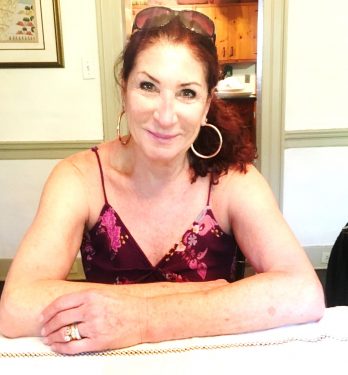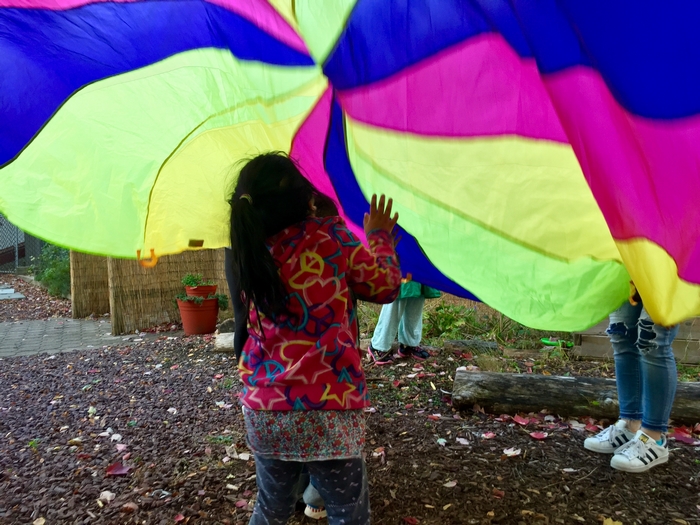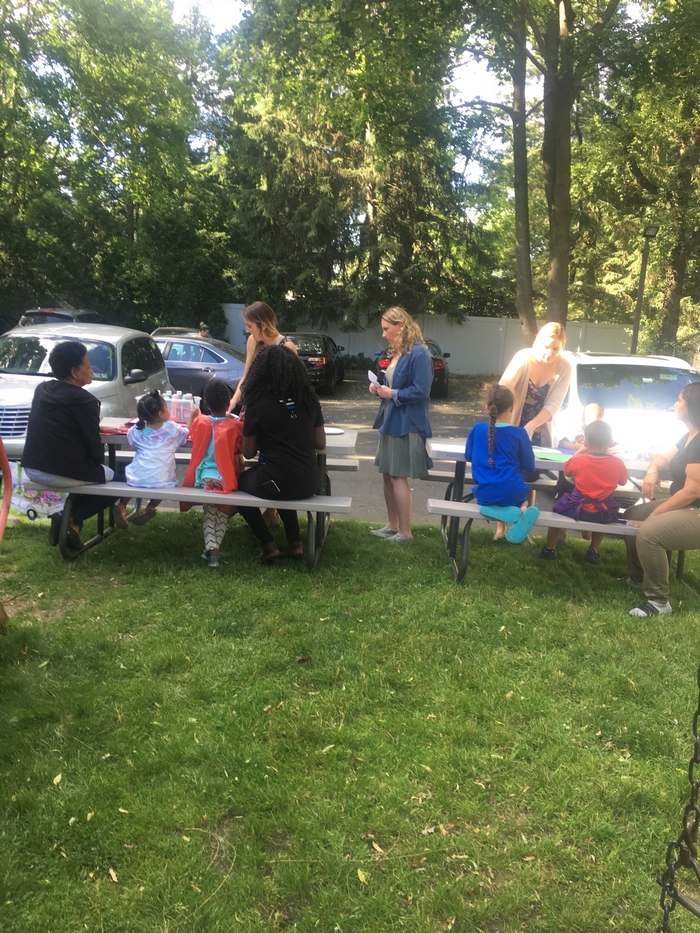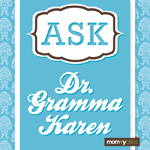 Marta Levy, BFA, CAT
Marta Levy, BFA, CAT
Director of Children’s Program, Art Therapist
Center for Hope and Safety (CHS)
Rochelle Park, NJ
The mission of the Center for Hope and Safety is to assist women and children who are victims of domestic violence, including emotional, economic, sexual, and physical abuse.
Dr. Gramma Karen: I often hear from grandparents looking for advice concerning domestic abuse, so I want to begin our interview by thanking you for agreeing to share your expertise and experience. In light of the estimated 12 million people in our country who are victims of verbal, emotional, and/or physical abuse, grandparents are often in the best position to help identify and address domestic abuse.
What are some specific things grandparents should look for to confirm their suspicions of possible abuse and violence going on?
Ms. Levy: First, I think it is important to make an important distinction: yelling and saying mean things to each other in an intimate partner relationship is not the same thing as trying to control or coerce another person through violence and threats.
Here are some red-flag behaviors of domestic abuse that grandparents can look for:
- Threatening language about hurting the partner or someone they care about, physically, economically, or legally.
- Aggressive gestures, such as shaking a fist, picking up a knife or punching a wall, close to the victim.
- Destructive behavior, such as throwing things, breaking things, or driving recklessly.
- Physical dominations such as shoving, shaking, or physical attack, such as hitting, pinching, or kicking.
Karen: Many times grandparents are not directly present when there are threatening behaviors. For example, they may overhear something or their grandchildren may say something that indicates possible abuse problems.
Ms. Levy: Yes, and it can be confusing for grandparents, even if they are present, especially if the abusive behavior is followed by apologies and regrets; this is called the “honeymoon period.” This honeymoon period is typically followed by the “cycle of violence” because the abusive behavior is a repetitious pattern.
Karen: What are some of the specific behaviors grandparents should be on the lookout for regarding their grandchildren’s behaviors?
Ms. Levy: Children of all ages, from infancy on, are the silent victims in an abusive family environment. They can exhibit behaviors such as: irritability and crying; difficulty sleeping; aggressive behavior; withdrawal and depression; anxiety; fearfulness; hyper-vigilance.
In addition, there may be psychosomatic symptoms, such as, stomachaches, lack of bladder control, nightmares, and digestive problems.
Older children (school age and adolescents) can go through a grieving period, have violent outbursts, their grades begin to fall, have difficulty expressing feelings, and have low esteem and poor social skills.
Karen: For those grandparents who suspect there might be abuse in their grandchildren’s home, what do you see as some initial do’s and don’ts?
Ms. Levy: Grandparents who suspect or witness domestic abuse in their grandchildren’s home are faced with some unique challenges. The two different interventions they need to consider are passive and/or active — both have significant consequences.
“Being there,” a more passive intervention, involves listening, offering support to the grandchildren and mother by letting them know that they can count on the grandparent to validate how they, the victims, feel about what’s going on. Grandparents need the victims to know that the grandparent’s presence includes unconditional love and relentless support, be it practical, financial, and/or emotional. This is not an easy task for the grandparents, since they might not be able to be on constant call.
So yes, grandparents can act as buffers if their presence helps diminish or de-escalate an abuser’s behavior. However, a cautionary point is that merely “being there” during an abusive incident may temporarily prevent violence, whereas getting verbally involved could escalate the violent behavior of the abuser. This is an example of a well-intentioned behavior making a bad situation worse.
Karen: Your explanation of passive, or “being there,” support makes sense. You also mentioned active interventions.
Ms. Levy: Yes, passive interventions can cross over to active interventions- for example, strongly persuading the mother to leave the abusive situation or reporting the abusive incident.
A word of caution: it is important to make sure that as a parent of the victim, offering the needed support does not cross over to taking control of the decision-making process to leave the relationship. Granting the adult child self-determination and independence to make the stay-or-go decision helps reduce the feeling of powerlessness, which she already experiences with the abusive partner.
It is most important to know that anyone can make a call to the Child Protection Services Hotline. “Mandated reporters,” e.g., law enforcement officials, social service workers, educational personnel, and mental health professionals are among those legally required to report suspicions of child abuse and neglect; and as mandated reporters, they must identify themselves when they call. Anyone who is not legally mandated, such as a concerned grandparent, may call anonymously.
Any legal actions are case specific, so the best course of action is to consult an attorney.
Resources
(The National Child Abuse Hotline is available 24/7 at (1-800) 4-A-Child or (1-800) 422-4453).
Here are two sites that can help you locate a lawyer, depending on the state or city:
AVVO and FindLaw.
Karen: Please tell us about the Center for Hope and Safety. For example, what can someone expect if they call your agency, what kinds of services and support do you offer?
Ms. Levy: Our hotline is available 24 hours a day, 7 days a week (201-944-9600). Callers receive help with crisis interventions, safety plans, counseling, and referrals.
If a grandparent or other concerned person calls on behalf of the victim, we ask to speak directly with the person who needs our support and assistance. Direct communication with the victim is essential since that person is the only decision maker for herself and her children.
Our Safe House offers confidential housing, as well as basic needs, therapeutic counseling, case management services, court and legal assistance, advocacy, community referrals, and job and housing search help.
The Children’s Program works with the children in a variety of ways: to counteract the effects of abuse; help stabilize the child who enters the Safe House in a state of crisis; help children express difficult emotions by addressing depression, anxiety, self-esteem and impaired social skills; provide art therapy sessions, individually, as well as to groups.
 Parachute dance: healing from trauma through free and creative expression
Parachute dance: healing from trauma through free and creative expression
The Children’s Program staff also works with moms to strengthen the relationship and attachment with their children, which was compromised in an abusive environment. The women and children at the Center for Hope and Safety Safe House begin their healing process once they feel safe; they are encouraged to continue counseling services after exiting the Safe House.
Our Community Outreach Program continues offering support including, case management, legal advocacy, and community referrals to former residents while helping families reintegrate into the community and embark in a life free of violence.
 Mommy and me group: play group to strengthen mom and child relationship
Mommy and me group: play group to strengthen mom and child relationship
Karen: In closing, Marta, I want to say that I am sure your input will make it easier for concerned grandparents to more accurately assess whether their grown children/grandchildren are victims of domestic violence. Also, you have provided resources to help grandparents get the advice and support they need to help their loved ones. Many thanks!
I know my readers join me in wishing you and your colleagues at CHS continued success in the important work you do.
Ask Dr. Gramma Karen is published every other Tuesday.
E-mail queries to [email protected]
Dr. Rancourt’s most recent book is,
Ask Dr. Gramma Karen, Volume II: Savvy Advice to Soothe Parent-Grandparent Conflicts



